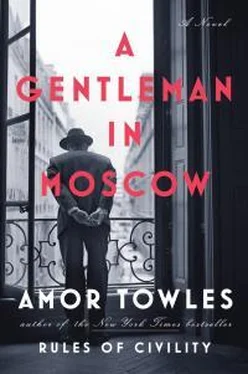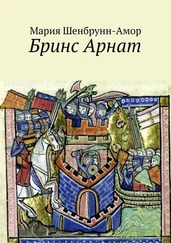Sweep on, street sweepers! Sweep until the cobblestones of Russia glitter like gold!
*Established in 1923, the OGPU replaced the Cheka as Russia’s cental organ of the secret police. In 1934, the OGPU would be replaced by the NKVD, which in turn would be replaced by the MGB in 1943 and the KGB in 1954. On the surface, this may seem confusing. But the good news is that unlike political parties, artistic movements, or schools of fashion—which go through such sweeping reinventions—the methodologies and intentions of the secret police never change. So you should feel no need to distinguish one acronym from the next.
*In those early years of the Soviet Union, how did the Bolsheviks countenance the idea of gilded chairs and Louis Quatorze dressers in the mansions of starlets? For that matter, how did they stomach them in their own apartments? Simple. Nailed to the bottom of every piece of fine furniture was a small copper plate embossed with a number. This number served to identify the piece as part of the vast inventory of the People. Thus, a good Bolshevik could sleep soundly in the knowledge that the mahogany bed he was lying on was not his; and despite the fact that his apartment was furnished with priceless antiques, he had fewer possessions than a pauper!
*Yes, this little gray fellow behind his little gray desk was charged not only with recording the information the waitresses gathered, but with ensuring their willing participation by reminding them of their duty to their country, by suggesting how easy it would be for them to lose their positions, and, when necessary, by making some other more ominous innuendo. But let us not condemn the fellow too quickly.
For he has never been to the Shalyapin Bar. Nor has he dined at the Boyarsky. He has been allotted a vicarious life—a life in which all experiences are at arm’s length, all sensations secondhand. No bleat of the trumpet, no clink of the glass, no sight of a young woman’s knee for him. Like a scientist’s assistant, his lot was simply to record the data and then relay a summary to his superiors without embellishment or elaboration.
To be fair, he was no slouch in this endeavor and was even known throughout his department as something of a prodigy. For no one in all of Moscow could write a report to such drab perfection. With limited instruction, he had perfected the art of withholding his insights, forgoing his witticisms, curbing the use of metaphors, similes, and analogies—in essence, exercising every muscle of poetic restraint. In fact, if the reporters whom he was dutifully transcribing had only seen his handiwork, they would have taken off their hats, bowed their heads, and acknowledged that here was a master of objectivity.
*While many of the young loyalists (like Nina) who joined the udarniks in the countryside would have their faith in the Party tested by what they witnessed, most of Russia, and for that matter the world, would be spared the spectacle of this man-made disaster. For just as peasants from the countryside were forbidden to enter the cities, journalists from the cities were forbidden to enter the countryside; delivery of personal mail was suspended; and the windows of passenger trains were blackened. In fact, so successful was the campaign to contain awareness of the crisis, when word leaked out that millions were starving in Ukraine, Walter Duranty, the lead correspondent for The New York Times in Russia (and one of the ringleaders in the Shalyapin Bar), would report that these rumors of famine were grossly exaggerated and had probably originated with anti-Soviet propagandists. Thus, the world would shrug. And even as the crime unfolded, Duranty would win the Pulitzer Prize.
*True, there was still one more purge to see to, but this one was to be directed at high Party officials and members of the secret police. In fact, Genrikh Yagoda, the dreaded head of the NKVD, was about to get his. Accused of treason, conspiracy, and diamond smuggling, Yagoda would be tried publicly in the Palace of Unions—right across the square from the Metropol Hotel—found guilty, and summarily shot. So, this too would be regarded by many as a harbinger of brighter days. . . .
*Stripped of their names and family ties, of their professions and possessions, herded together in hunger and hardship, the residents of the Gulag—the zeks —became indistinguishable from one another. That, of course, was part of the point. Not content with the toll exacted by means of incarceration and forced labor in inhospitable climes, the supreme authorities sought to efface the Enemies of the People.
But an unanticipated consequence of this strategy was the creation of a new polis. Having been stripped of their identities, henceforth the zeks —though millions in number—would move in perfect unison, sharing in their privations as well as their will to persist. Henceforth, they would know each other whenever and wherever they met. They would make room for each other under their roofs and at their tables, addressing each other as brother and sister and friend ; but never, ever, under any circumstance, as comrade .
*What sort of topsy-turvy circumstances could lead to a boom for builders and a bust for architects? Simple:
In January, the mayor of Moscow had called a convention of the city’s architects to discuss the needs of the capital given the rapid growth in its population. Over the course of three days, an excited consensus had quickly formed across the various committees that the time had come for bold new steps. Taking advantage of the latest materials and technologies, they proposed that the city erect towers forty stories high with elevators that shot from the lobby to the roof, and apartments that could be configured to suit every individual need, each with a modern kitchen and private bath and plate-glass windows emitting natural light!
At the closing ceremony of the convention, the mayor—a bald and brutish sort, whom we will have reason to revisit later—thanked the attendees for their artistry, their ingenuity, and their dedication to the Party. “It is satisfying to discover that we are all in agreement,” he concluded. “In order to house our fellow comrades as quickly and economically as possible, we must, indeed, pursue bold new steps. So, let us not get bogged down with elaborate designs or bow to aesthetic vanities. Let us apply ourselves instead to a universal ideal that is fitting for our times.”
Thus was born the golden age of the prefabricated, cement-walled, five-story apartment building—and the four-hundred-square-foot living spaces with ready access to communal bathrooms boasting four-foot tubs (after all, who has time to lie down in a bath when your neighbors are knocking at the door).
So ingenious was the design of these new apartment buildings, so intuitive their architecture, they could be built from a single page of specifications—regardless of which way the page was oriented! Within six months, thousands of them had sprung up on the outskirts of Moscow, like mushrooms after a rain. And so systematic was their realization, you could mistakenly enter any apartment on your block and feel immediately at home.
*The making of candles; the sealing of letters; the sculpting of maquettes; the polishing of parquet; the removal of hair; the shaping of moustaches!
*The studious reader will recall that upon Stalin’s death there were eight men of eminence at the pinnacle of the Party. Where were the other two at the time of this dinner? Lazar Kaganovich, a fine old Stalinist in the iron-fisted mold, had been sent on an administrative mission to Ukraine. Within a few years, he would be presiding over a potassium factory a thousand miles from Moscow. But at least he fared better than Lavrentiy Beria. The former head of the secret police, who many Western observers thought well positioned to inherit the throne when Stalin died, instead was decorated by the Party with a pistol shot to the head. And then there were six.
Читать дальше












